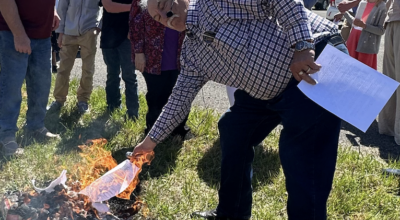Garden site selection
Published 3:49 pm Tuesday, January 23, 2018
Vegetable production is increasingly popular for Tennessee residents. Growing vegetables at home provides financial and nutritional benefits through the bounty of a fresh harvest, and the activity enhances personal health and well-being. However, a basic understanding of soils, site selection, and crop maintenance is required before backyard growers can take full advantage of these benefits of home food production.
Selecting a garden location with adequate sunlight can be one of the most important factors in home vegetable production — and sometimes one of the most challenging. Not only does sunlight provide energy for plant production and growth, but it also provides heat through solar radiation. Full sunlight is best for a garden and a minimum of six to eight hours of daylight should be provided for most crops. The garden should be located away from buildings or trees that provide shading. During summer when the sun is high in the sky, trees will shade a smaller area. However, during fall to spring seasons when the sun is lower in the sky, trees and other objects will cast longer shadows. This is an important consideration if you plan early or late season production in your garden.
Another way to consider lighting in your garden is the aspect. Garden sites that face south or southeast often have sun for longer periods of the day and soils also commonly warm up and dry out faster than soil on more protected northern sites. Temperatures may be more variable on southern sites, though.
In addition to available light, soil characteristics of a potential garden site are also quite important. Not all soils are the same and sites can vary in their ability to provide for plants. Soil provides physical support as well as access to water, nutrients, and air. Successful vegetable production is possible across a range of soils, but some may take more amending than others or require modified management.
Ideal garden soils are a medium texture, meaning a mixture of sand, silt and clay, which is often referred to as a loamy soil. High levels of clay can result in a soil that holds water so tightly that it may not be available for plants, and sandy soils may not retain enough water or nutrients. Loamy soils provide good middle ground for plant production. The way soil fits together — or its structure — is also important for gardening. Soils with good structure have plenty of spaces for water and air to be held and accessed by plant roots. Organic matter can improve soil structure and this is one of the reasons why adding materials like compost or peat can benefit the garden. Soil with more organic matter can lead to better water and nutrient holding capacity.
Ideal garden soils are those that allow water to drain through the profile but also hold some water for plant use. Soil texture greatly influences drainage, as large sand particles tend to allow water to drain faster but retain little moisture for plant growth. In contrast, soils rich in silt and clay particles trap water and are slower to drain, but retain moderate to large amounts of water for plant growth. Loamy soils that have a mix of clay, sand and silt often provide good intermediate drainage and available water for plant growth. Organic matter can improve the ability of soil to hold water while also supporting structure and better drainage.
Slope, or change in elevation over distance, influences water infiltration. Precipitation is much more likely to run off rather than enter and move through the soil profile on steep slopes. Less infiltration and higher runoff of precipitation reduces available water for plants in the soil and water moving across the soil surface also leads to erosion of topsoil. Losing soil to erosion can dramatically alter the landscape and the productivity of soils over a short period of time. Gardening in an area with steep slopes and frequent erosion can reduce crop productivity while degrading soils for future use. In these situations, it is often best to select another location for the garden or add terraced beds.
Slope can also influence the environment in the immediate area. A slight slope can often allow cold air to drain downward and prevent it from settling and forming what is called a frost pocket. Small differences in temperature can be important in protecting crops in the spring and fall. Other methods for protecting crops and extending the season will be discussed later in this series.
And finally, accessibility for maintenance, proximity of water for irrigation, and avoiding areas where soil has been degraded by previous use are also important. Look for weed problems, rocky or shallow areas or other challenges that would reduce the potential for success. Keep in mind that poor soil conditions and heavy weed pressures can be addressed, but the time investment may significantly outweigh the benefit early in the gardening journey.
Stay tuned for our next article on preparing a vegetable garden. If you have any questions, feel free to give me a call at 423-626-3742 or email at trison1@utk.edu .






